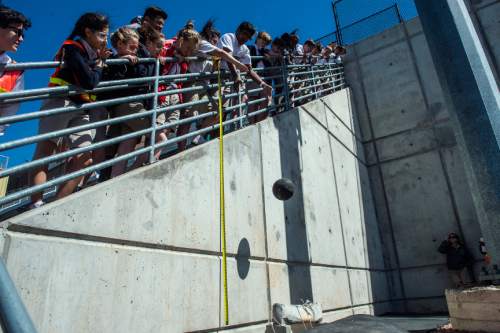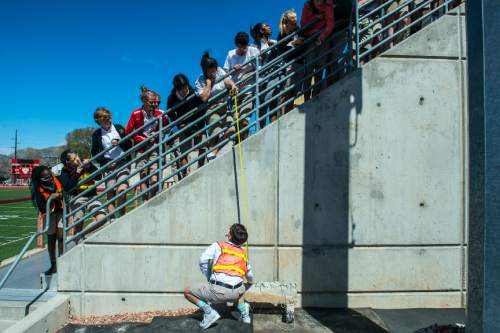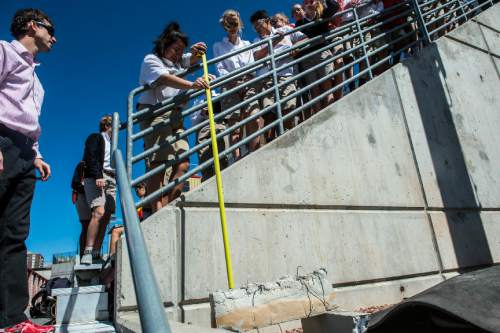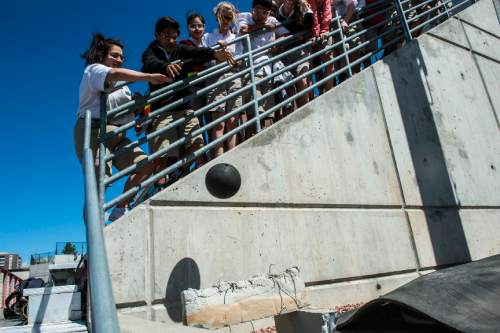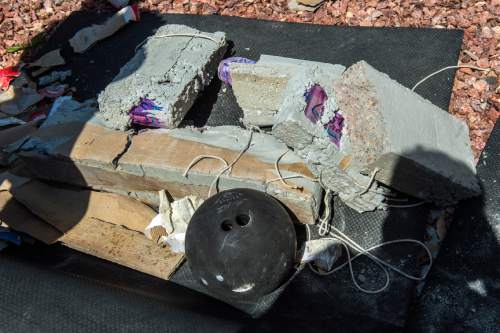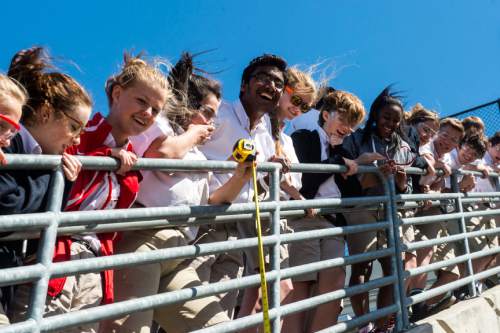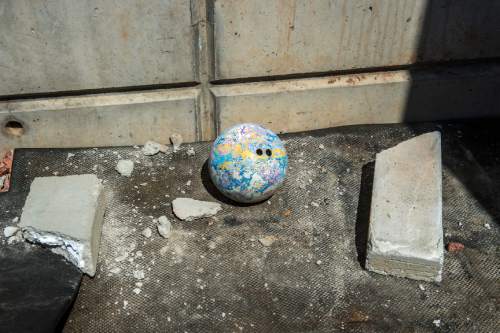This is an archived article that was published on sltrib.com in 2016, and information in the article may be outdated. It is provided only for personal research purposes and may not be reprinted.
I'm not proud of this, but I once shot out some windows when I was a teenager. Things probably wouldn't have gone so badly (for me) if I'd used a BB gun like a normal kid.
The gun I used was of a much larger caliber, so it wasn't just the windows that were damaged. By the time the police, the builder of the homes and my parents finished, what was left of my butt would have fit handily into an ashtray.
I bring this up because while vandalism is a serious crime, it can also be a highly educational one. There's even a science to it. Just ask the freshmen science students at Judge Memorial High School.
On Tuesday, Dasch Houdeshel's science class crushed concrete beams by dropping bowling balls on them. As a reward for donating the bowling balls, they invited me to watch. I may not be a kid anymore, but I still enjoy smashing stuff.
Dasch is one of those unique teachers who can take an otherwise pointless bit of destructive fun and spin it into something educational for even the most learning-resistant student.
This is something that few teachers have. If I'd been taught by more teachers like Dash, I'd probably be something useful today.
Dropping bowling balls onto concrete beams had a legitimate point — structural integrity. How much shock can a concrete beam stand before it fails — especially if the beam was deliberately weakened?
The idea was born out of the 6.4 magnitude earthquake that struck Tainan, Taiwan, last February, killing more than a hundred people. Several high-rise buildings were heavily damaged; one collapsed completely.
Combing through the wreckage, rescuers discovered that many of the concrete support beams that failed had been constructed with tin cans as filler to reduce the amount of concrete used.
To give his students a practical lesson in structural integrity, Dasch had them construct their own beams. Some were constructed well. Other were deliberately tampered with and had been inserted with empty cans.
Wednesday was the big test. The beams were hauled out to a place near the football field, where bowling balls of different weights were dropped on them from varying heights.
Students Jacob Belzer and Charlotte Brown, both 15, patiently attempted to explain the science to a guy who skated out of high school 45 years ago with a 1.5 GPA. I didn't get most of it. I was too amped up for the demonstration.
The first beam, which was filled with soda cans, failed when a 12-pound bowling ball named "Gary" crushed it from 9 feet.
On a personal note, I was proud of Gary. Sonny and I have shot him out of a cannon at least a dozen times, including once through a washing machine and another time through a car door. It's nice to see that he's found useful work.
Sturdier beams were gradually introduced. Abigail Ramirez, 15, was in charge of making sure nobody cheated. She measured the heights and watched to see that the balls were dropped evenly.
The final test was on a beam made of pure concrete. No cans, Styrofoam, animal carcasses or balloons were used for filler. It survived three drops before Mary "Deadeye" Ndeze, 14, crushed it from 10 feet.
According to Dasch's class, the builders of the defective beams in Taiwan that killed a bunch of people saved no more than 25 percent concrete by using fillers.
That's not a lot of money when you consider the lives it cost. Compared to that deliberate fraud, I came away feeling better about having once been just a mindless vandal. That was educational enough for me.
Robert Kirby can be reached at rkirby@sltrib.com or facebook.com/stillnotpatbagley


